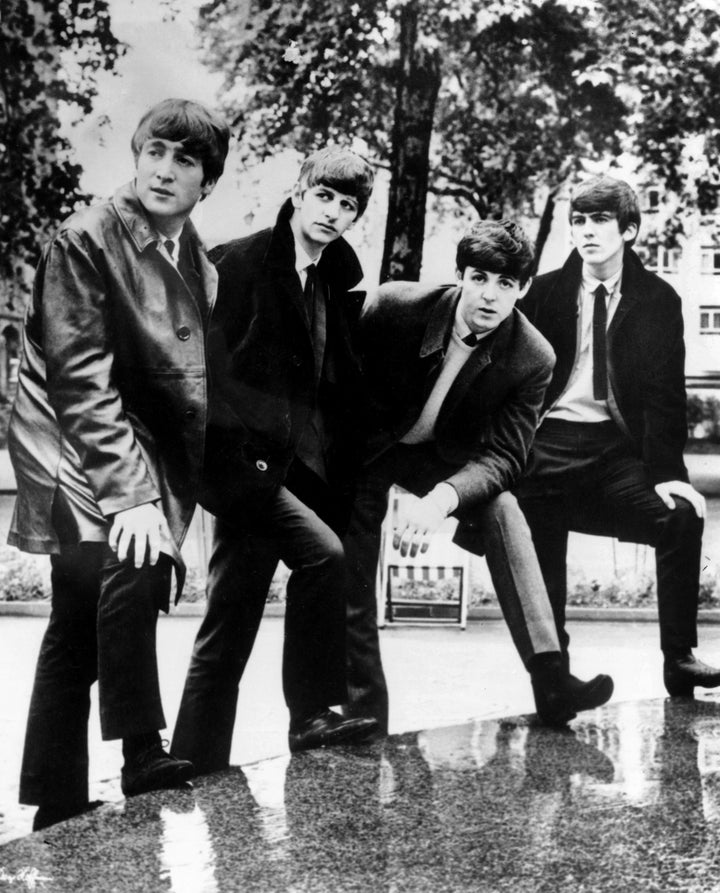
By Steve Rabey
Religion News Service
(RNS) As the lead guitarist of the world's biggest rock band and a prolific song writer, the Beatles' George Harrison has secured his place in pop culture history. But his greatest legacy may be the way his decades-long spiritual quest shaped the ways the West looks at God, gurus and life.
Harrison, who died of cancer in 2001 at age 58, was an intensely private global superstar. He's now in the spotlight again, thanks to a coffee-table book by his widow Olivia and a new Martin Scorsese documentary on HBO.
Both projects are titled "Living in the Material World," a Hindu-inspired phrase Harrison chose for a 1973 song that illuminates his theology and sense of artistic vocation:
"Got a lot of work to do / Try to get a message through / And get back out of this material world."
Harrison discovered Eastern religion through his love for Eastern music, which was sparked when The Byrds' David Crosby and Roger McGuinn introduced him to the work of Ravi Shankar, the renowned sitar musician who would become a lifelong friend and mentor.
Harrison added sitar lines to the Beatles' 1965 hit "Norwegian Wood." When he traveled to Bombay the next year to study with Shankar, he was moved by the Indian people's spirituality.
"The difference over here is that their religion is every second and every minute of their lives," said Harrison, who like Paul McCartney was raised in Liverpool's devout but grim Roman Catholic community.
Harrison previously had sought insight through marijuana (introduced to the Beatles by Bob Dylan) and LSD, which made him feel oneness with the cosmos. "It was fantastic," he once said. "I felt in love, not with anything or anybody in particular, but with everything."
Drugs, however, weren't enough. "LSD isn't a real answer," he said.
In 1968, Harrison led the Beatles and their celebrity friends on a pilgrimage to Rishikesh, India, to study Transcendental Meditation with Maharishi Mahesh Yogi. The Maharishi, like other savvy Eastern gurus, used endorsements from rock stars to market himself to spiritual seekers in the West, many of whom embraced the Beatles as seers and oracles.
Most of the time, though, Harrison let his music do the talking.
His dreamy, sitar-drenched "Within You Without You" opened side two of 1967's classic "Sgt. Pepper's Lonely Hearts Club Band" album. The song contrasted Western individualism with Eastern monism:
"And the time will come when you see we're all one / and life flows on within you and without you."
"I Me Mine," the final song recorded by the bickering Beatles, attacked "the ego, the eternal problem."
After the Fab Four folded, Harrison's solo career blossomed. "All Things Must Pass," his 1970 solo album, was a three-LP box set that Rolling Stone magazine called "the 'War and Peace' of rock and roll." The chorus of "My Sweet Lord," a No. 1 single, alternated chants of "Hallelujah" and "Hare Krishna."
Thirty-one years and 13 albums later, Harrison's last recorded song was the title cut of his posthumous 2002 release, "Brainwashed." The song catalogs humanity's spiritual crisis, pleads for divine deliverance, repeats "God" 48 times in the choruses, and closes with Harrison and his son Dhani chanting a Hindu hymn.
"George was making spiritually awake music," said filmmaker Scorsese. "We all heard and felt it, and I think that was the reason that he came to occupy a very special place in our lives."
Harrison's beliefs were as complex as his song structures. His greatest compositions combined compelling pop melodies and ancient religious teachings, with lyrics ranging from cheerful ("Here Comes the Sun") to sober ("Beware of Darkness").
He produced an album of Krishna Consciousness chants and played with Dylan and Roy Orbison in the Traveling Wilburys. He could be preachy, pedantic and dismissive about problems in the "material" world, but also organized 1971's superstar Concert for Bangladesh, raising $10 million for victims of human and natural tragedies.
A cafeteria Hindu, Harrison's songs drew inspiration from everything from Ram Dass' bestselling memoir ("Be Here Now") to the Tao Te Ching ("The Inner Light") to Paramhansa Yogananda's "Autobiography of a Yogi" ("Dear One").
Other songs were mini-sermons illustrating Hindu concepts like reincarnation ("Art of Dying"), karma ("The Lord Loves the One (That Loves the Lord)"), the divinity within ("The Inner Light"), the illusory and deceptive nature of "reality" ("Devil's Radio"), and the spiritual shallowness of the '60s counterculture ("The Day the World Gets 'Round").
"Harrison exemplified consumerist religion," said Dale Allison, author of "The Love There That's Sleeping: The Art and Spirituality of George Harrison." "He was curious and read a lot, and he liked to try out things that he read."
Harrison was perhaps the most explicitly and consistently theological rock star of the last half-century. While he failed to convert everyone to his beliefs, he nudged his bandmates -- and his listener fans -- a bit further to the East, encouraging audiences to open themselves to new (or very old) spiritual influences.
Or, as his widow Olivia puts it, he "transcended the distractions of success and fame to maintain a one-pointed focus upon his goal of spiritual awakening."